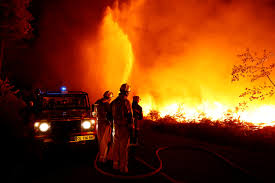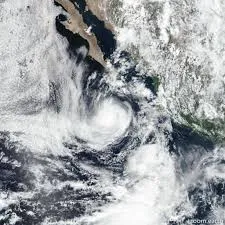
Tropical storm forming near U.S.
Tropical Storm Brewing Near U.S. Coastline Forecasts Warn of Escalating Threat
As the Atlantic hurricane season begins to ramp up, meteorologists are closely monitoring a developing tropical system in the Gulf of Mexico that could strengthen into a named tropical storm within days. This disturbance, currently designated as "Invest 92L" by the National Hurricane Center (NHC), has shown signs of rapid organization, prompting advisories along parts of the U.S. Gulf Coast. If conditions remain favorable, the system could evolve into the first major storm of the season to impact the continental United States raising concerns for coastal residents, emergency planners, and industries reliant on maritime stability.
The system began as a loosely organized cluster of thunderstorms drifting northward over unusually warm waters off the Yucatán Peninsula. Satellite imagery and oceanic data reveal sea surface temperatures nearing 30°C (86°F), well above the threshold needed for tropical cyclone development. Combined with low vertical wind shear a critical factor that allows storms to consolidate this environment has proven ideal for the disturbance to intensify. Over the past 24 hours, a more defined low pressure center has emerged, and circulation within the storm is becoming increasingly symmetrical, early signs of a system gaining tropical characteristics.
According to the latest models, the storm is projected to move north northeast toward the central Gulf Coast, with a potential landfall in Louisiana, Mississippi, or the Florida Panhandle. While the exact track remains uncertain, meteorologists emphasize that even a weak tropical storm can produce life threatening storm surge, torrential rain, and inland flooding. The NHC has placed a 70% chance of cyclone formation within the next 48 hours, with the potential for further intensification depending on upper level atmospheric patterns and oceanic heat content. Emergency officials across multiple states have already begun precautionary planning for possible evacuations, flooding, and disruptions.
The potential storm's timing is especially concerning. It arrives at the height of summer, when coastal populations swell due to tourism and holiday travel. Beaches, ports, and offshore drilling operations are vulnerable to disruption, and agricultural regions in the Southeast could face flooding that threatens crops already stressed by heat and humidity. In urban areas, aging drainage systems may be unable to cope with the rapid rainfall tropical storms often deliver, increasing the risk of flash floods and infrastructure damage. Local authorities are urging residents to review emergency plans, stock essential supplies, and remain tuned to official forecasts.
The atmospheric setup driving this system is part of a larger pattern that's been observed since early July. A persistent high pressure system over the central Atlantic has created a steering corridor that funnels disturbances from the Caribbean toward the southeastern U.S. Meanwhile, the El Niño phenomenon in the Pacific has had a weaker than expected dampening effect on Atlantic storm formation so far this season, defying earlier forecasts that suggested reduced hurricane activity. As a result, forecasters now warn that conditions could support several more storms through August and September, traditionally the most active period for Atlantic hurricanes.
Federal and state agencies are mobilizing in response to the storm’s potential threat. The Federal Emergency Management Agency (FEMA) has activated regional coordination centers and placed search and rescue teams on standby. The U.S. Coast Guard has issued marine warnings and begun rerouting vessel traffic in areas likely to experience high seas and dangerous wind gusts. Some states, including Alabama and Florida, have preemptively declared states of emergency in vulnerable coastal counties to expedite the flow of resources and mobilize disaster response personnel.
Communities still recovering from past storms face an added layer of vulnerability. In parts of Louisiana, for instance, infrastructure damaged by hurricanes Ida and Laura remains under repair, leaving levees, power grids, and roadways susceptible to further strain. Nonprofits and local volunteer organizations are also preparing to deploy emergency supplies to underserved communities that may be disproportionately affected. These groups emphasize the importance of early communication and community awareness, particularly in rural or low income areas that lack robust emergency infrastructure.
In conclusion, the developing tropical system near the U.S. Gulf Coast serves as a sobering reminder of the unpredictable and fast moving nature of storm threats during hurricane season. With meteorological conditions aligning to favor storm development, the coming days will be critical for monitoring and preparation. if the system strengthens into a named storm or remains a tropical depression, its potential for heavy rainfall, storm surge, and localized flooding cannot be underestimated. Residents across the Gulf and Southeastern states are urged to remain vigilant, heed official advisories, and prepare for all scenarios as forecasters continue to track this unfolding weather event.











